Skin problems of Cats
Learn more about skin problems of cats by exploring our site and become a true expert on the animal kingdom. You'll find content created for the best professionals with pictures, videos and opinions.
26 articles

Feline sarcoma is a type of cancer which affects mesenchymal cells of various tissues. This means it can affect tissues such as bone and cartilage, but it is more common in the soft tissues such as fat and muscle. These sarcomas most commonly present as tumors and it is normally used to describe malignant cancers,...

Melanoma in cats is a type of skin cancer that can also develop in the eyes, mucous membranes or mucocutaneous junctions. The latter is the transitional area between mucous membranes and skin. Although melanomas are always malignant in human medicine, we can find both benign and malignant melanoma in...
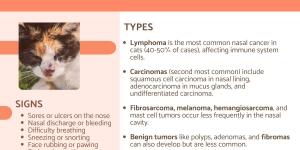
Nasal cancer in cats, while not as common as some other feline cancers, can be a serious health concern. Nasal tumors are less common in cats than in dogs, making up about 1% of tumors in cats. However, these tumors can develop in various forms, from lymphoma to carcinomas, each requiring specific treatment...

Scabby and crusty ears on cats are relatively common, especially in feral felines. Being an extremity, they are more vulnerable to their environment and the dangers within it. These dangers include attacks from other animals, abrasions from foliage, opportunistic parasites and even the elements. While these...
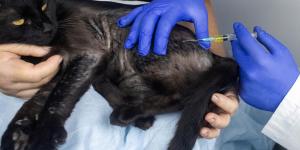
Dermatitis in cats is a common and troublesome skin condition marked by inflammation, itching, and often hair loss. This condition can stem from various factors, including environmental allergens, food sensitivities, parasitic infestations, bacterial or fungal infections, hormonal imbalances, and autoimmune...

Also known as otohematomas, aural hematomas are an accumulation of bloody fluid in the ear. Specifically, the blood accumulates between the cartilage of the ear and the skin causing inflammation. There are various causes of feline aural hematoma, both primary and secondary. For example, a primary cause...

We may observe a cat cyst if we are petting them. When touching their fur, we might notice a subcutaneous lump, one of the most worrying such symptoms as it can imply the presence of cancer. Although this is possible, there are many types of cat cysts which can result in a lump or tumor, without being...

Scabs on a cat's skin can be due to various causes, but there are some which are more likely when the scabs appear on a cat's neck. A scab will occur once an open sore has started to heal since the hard crust is part of their immune response. Looking at the larger clinical picture will help us to understand...

Feline solar dermatitis is a pathology of the skin of our cats that arises as a result of frequent or continuous exposure to the sun. Also known as actinic dermatitis, it is especially prevalent in white cats and in those areas with less hair. The most affected area is the head, specifically the ears, eyes...

A cat's wound should start to heal as soon as it occurs. The healing process is a part of the feline's natural defenses which is vital to sustain life after trauma and other threats to their health. While healing is something we often take for granted, for a cat's wound to heal properly many different processes...

Feline atopic dermatitis is a type of allergic response. When a cat has a hypersensitivity to a particular environmental allergen, they body reacts in an exaggerated way. These allergens can include dusts, mites, pollen or other common environmental stimuli. These allergens do not affect those without...

For many cats, it is normal to have a thinner patch of hair in the area between their eyes and the base of their ears. As with humans, it is also common for parts of their coat to become thinner as they age. Unlike humans, most cats have hair all over their body. Despite this fact, the area above the...

Warts may be easier to see on human skin, but cats are also susceptible to them. As with humans, warts on cats can have various underlying causes. They are generally benign skin growths, but the types of warts cats can develop are specific to the species. Many are related to the feline papillomavirus, but...

It is common for caregivers to panic when they detect a lump on any part of a cat's body. Some ignore it for fear that it is some kind of skin cancer, but the truth is that not all lumps are synonymous with cancer. In any case, lumps can be curable so the soonest possible detection and treatment is essential.
In...

When kittens are born, they are not the same color they will be when they become adult. Even their eyes are not usually the same since all cats are born with blue eyes. Only later will different pigments develop. However, after 12 to 18 months most cats should be the color they will be for the rest of their...

Although rare, cats can suffer from autoimmune skin diseases which includes pemphigus foliaceus, pemphigus vulgaris, pemphigus erythematosus and paraneoplastic pemphigus.
In this AnimalWised article we're going to talk about autoimmune skin disease in cats, including the different types of pemphigus...
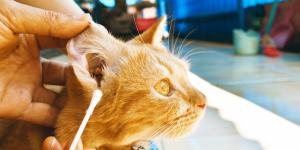
There is a key difference between a cat having floppy ears and a cat having one floppy ear. In the case of the former, the reason is likely due to their breed. Some cat breeds have been specially bred to promote ear shapes different from most other domestic cats. These include long eared cat breeds,...

A cat scratching itself is a normal and healthy behavior. If we had the dexterity of most cats, we'd be scratching just as much. As with any behavior, scratching excessively can cause serious harm. If a cat scratches itself raw, then wounds can develop which cause complications. Other reasons for a cat...

Fungi are very resistant organisms that can access an animal and/or human’s body through skin wounds, the respiratory tract or by ingestion. Sporothrix schenckii, for example, is a fungus which can cause sporotrichosis in cats. If not treated in time, it can be fatal. Itraconazole is one of the most...
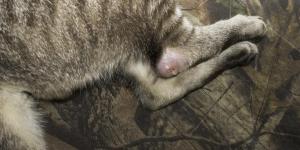
When we think of an abscess, it is common for many to first think of a dental problem. If a cat tooth abscess occurs, it might be difficult to tell until the symptoms become acute. But a cat can get an abscess in various places, including their, neck, head, tail or anywhere fluid can accumulate. These...
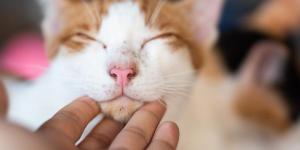
Feline acne is a dermatological problem which can occur in cats of any age. Feline acne on a cat’s skin is visible through the formation of blackheads. Symptoms of feline acne include inflammation, pain and sores. But, what causes feline acne and how do you treat it? And, most importantly, is feline...

If you see that you have scabs on your cat, it means their skin has broken and is trying to repair itself. Unless you have a hairless cat, the hair will fall out if the skin breaks in this way. Any reason for hair loss in cats is worrying, but if you see wounds or scabs, there is particular cause for concern....
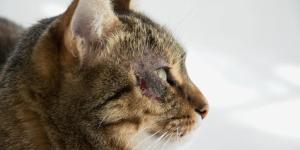
The causes of open wounds on cats are varied, but they are most commonly related to a trauma. These can range from being minor to life threatening, depending on the tissue affected, amount of blood loss and the risk of bacterial infection. If a bacterial infection does occur, the cat's open wound will likely...

We might think that black specks in a cat's fur are dandruff, but it is possible they are a symptom of parasites such as fleas. Sometimes the black dandruff can be under the chin, around the ears or in other common areas. These locations can help us to determine the cause of the cat's black specks. Dandruff...

The reason your cat has patches of hair missing from their coat is that something is wrong physically or mentally. A cat's hair is a signifier of their well-being. A healthy cat will have a thick and lustrous coat (excluding naturally hairless cats), an unhealthy cat will lose not only their shine, but...

Feline miliary dermatitis is a disease complex that manifests itself in cats through the appearance of inflammation and rashes with crust around different areas of the cat's body such as the neck, head, back and other places. If you notice that your cat has recently been scratching and has several patches...
